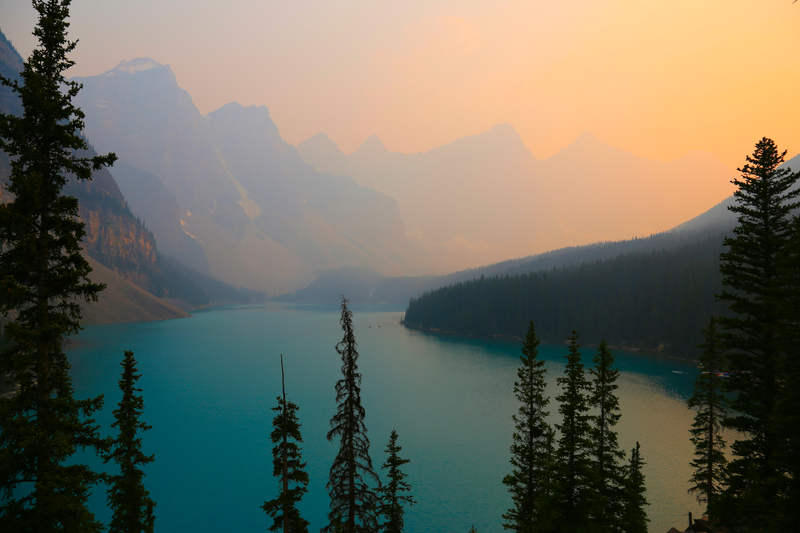There are records that are thrilling and exciting to break. And then there are ones that you never want to see broken.
Right now, about 10,000 Albertans are stuck in shelters, waiting to return to their homes. The cause?
A rush of wildfires that have covered about 150 times the area burned over the past five years combined.
The numbers are devastating. At this time last year, about 450 hectares (4.5 sq. km) of land had been burned. This year, that number is over 1 million hectares (10,000 sq. km)—that's almost the size of Montenegro, a small European country.
It is also almost a new record for land burned during an Albertan wildfire season. The current record is 1.3 million hectares (13,000 sq. km), which happened in 1981. But that record was set for a fire season that extended all the way into October. That's five months away.
The effort to fight the hundreds of fires that have started across the province have demanded every moment that Alberta's firefighters can spare. And then some. These brave responders have been joined by additional firefighters from across Canada, as well as nearly 100 more from the United States and over 200 Australians and New Zealanders.
Heavy rainfall is helping
Police have had to put up roadblocks in parts of Alberta to keep the public away from wildfires. (Getty Embed)
Along with the additional firefighters, the effort has received more good news.
Rain, and lots of it.
This week, Alberta has finally received heavy rainfall in the places where it needed it the most. This has helped to turn the tide according to experts in the province. As of Thursday, the number of active fires was listed at 56, way down from what was happening earlier this month.
But the people who live in places like Sturgeon Lake, Valleyview, and Fox River, the wait to return home is continuing. And they are not sure what they will find when they do return home.
Speaking at a news conference, Alberta Wildfire information unit manager Christie Tucker said that while the rain and extra forces help, "fighting fire is not something that will change overnight. What we can do is fight the fire to the best of our ability."
What is a wildfire?
A prescribed, or controlled, burn is a smaller wildfire started on purpose to help manage a forest's life cycle. It can also be used to stop the advance of a larger, out of control wildfire—once that fire hits an area where the forest is already burned, it hopefully won't have enough fuel to keep burning. (Getty Embed)
Wildfires are large blazes that happen in forests and brushlands. In many cases, they are not only a natural occurrence (usually started by a lightning strike hitting dry wood), but they are beneficial to the life of the forest.
By burning away older and dying trees, the forest is cleared for newer, smaller trees to get all the sunlight needed to grow. The ash from the fires also adds lots of nutrients to the soil. In a few years, the forest not only recovers, but comes back stronger than it was before.
In fact, many people who take care of forests—from park rangers to Indigenous communities—will perform what are known as prescribed burns (small, controlled wildfires) to kickstart this process.
Why are these ones so bad?
A picture from May 10 showing a large area in Alberta burned by a wildfire. (Getty Embed)
The wildfires that are happening in Alberta this year are very different to these prescribed burns. Not only are they far larger, many are well out of control. The result is a series of fires that continue to burn for weeks, even months on end. They travel across the landscape, threatening wildlife and communities that are caught in their path.
In the last decade, Canadian provinces like B.C. and Alberta, as well as the US state of California, have all experienced the devastating power of these types of fires. And even after these massive fires finally stop burning, the threats can continue.
The root systems of the trees in forests help to connect and bind the soil that they grow in. After fire and drought, those roots systems break down, and the land becomes weak. Sudden rains can wash that land away, leading to mudslides and floods as riverbanks break down.
And why are these fires happening now?
Every fire season is different, and they are many factors that contribute to one season being worse than another. But there is no question that climate change, which is making many places hotter and drier than usual, is making places like B.C., Alberta, and California more likely to experience devastating wildfires.
 Even places not affected directly by the wildfires can have skies full of smoke. (ID 229199456 © Chris Hill | Dreamstime.com)
Even places not affected directly by the wildfires can have skies full of smoke. (ID 229199456 © Chris Hill | Dreamstime.com)









